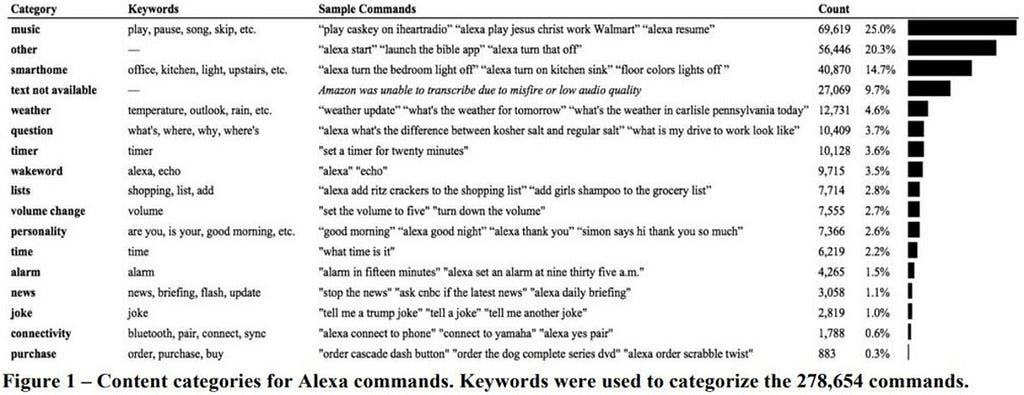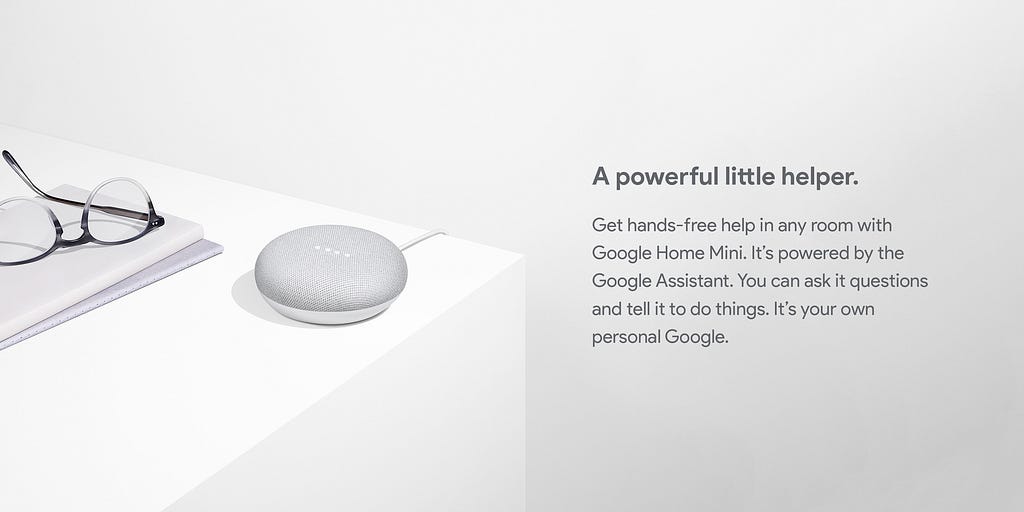 |
submitted by /u/Botmywork [link] [comments] |
Year: 2021
-
Global Chatbot Trends And Statistics To Look In 2021 and Beyond
-
Social Turing Test – TuringJudges
Hi everyone!
I’ll wanna try an experiment here and create a social #TuringTest!
The judges of the experiment are you. By voting on discussions that have a 50% of chance of being a #human or an #AI.
What do you think about it?submitted by /u/TuringJudges
[link] [comments] -
10 Ways Chatbots are Driving Digital Transformation

Source The digital transformation wave has significantly changed our life. It has made us smarter and now we have started focusing on productivity over profit. We no longer want to waste our time on trivial yet time-consuming things. Instead, we have started automating them and shifting our focus towards things that matter.
As a part of this initiative, chatbots have become an incredible part of the corporate culture. You will be surprised to know that over 87% of corporate communications are handled by chatbots alone. Even outside the corporate world, chatbots are helping us become more productive. In fact, It will not be wrong to say that chatbots are the drivers of digital transformation.
In this blog, we will talk about 10 ways chatbots are helping in the digital transformation initiative. Let us begin:

1. Better Lead Generation and Nurturing
We know how difficult it is to generate and nurture new leads. Not only do we have to actively respond to potential customers and remain in touch with them throughout the lead nurturing journey, but also ensure we are providing them the right information at the right time. All of this can be overwhelming.
Chatbots are making the whole process easy by providing a seamless way for customers to interact with our business.
Now, we no longer have to remain available all the time to actively respond to customers. A chatbot can take care of that instead. We can even personalize messages in chatbots to guide customers throughout their journey and help them make quick decisions.
Here are some other ways chatbots are helping in better lead generation and nurturing:
- Whenever potential customers get in touch with your business, chatbots qualify them by asking the right questions and directing them to the sales department for a sales conversation. They even schedule appointments if the team is busy or unavailable at the moment.
- Chatbots nurture qualified leads and keep prospects engaged throughout the customer journey by providing personalized recommendations, combo offers, or discount coupons.
That is why reputed brands like H&M and eBay are using Chatbots to sell their products online. Even quick service restaurants have been able to significantly reduce the queue time and increase their sales (by almost 30%) with the help of Chatbots.
Trending Bot Articles:
4. How intelligent and automated conversational systems are driving B2C revenue and growth.
2. Deliver 24×7 Automated Customer Support
Last thing a customer would want after approaching a business is to wait. If there is even the slightest delay in responding to them, chances are they will move on to a rival business. That is why over 62% of companies view customer experience as a key competitive differentiator.
Chatbots are helping us engage with customers 24×7 by quickly responding to their queries and directing them to answers that genuinely help them. We can even train chatbots to better respond to customers by adding general FAQs and answers.
As a result, we can ensure better customer satisfaction and reduce customer churn.
3. Save Customer Service Costs
According to reports, there are over 265 billion customer requests every year and businesses spend over 1.3 trillion US dollars to service them.
Chatbots are helping us in reducing customer service costs by 30% by eliminating the need of hiring customer support agents. This is helpful especially when we are running a small business with not so much revenue.
However, we would also not want to compromise customer experience just to save a couple of bucks. Well, chatbots are taking care of that as well. Here are some ways Chatbots are optimizing customer service costs while ensuring the best quality:
- Scaling customer support even during busy hours and ensuring the customer experience is not hampered.
- Automating routine business processes so that the customer support team can focus on complex tasks.
- Allow businesses to bring new customer service models onboard that can enhance brand value and credibility.
The best thing about Chatbots is that we can easily scale them during busy hours without extra costs. On the contrary, hiring new staff demands spending a lot of time and money. Hence, they can significantly cut unnecessary costs and increase revenue.
4. Helping People Smartly Prepare for Competitive Exams
Preparing for competitive exams is challenging. Seats are limited, while the number of people applying for them is significantly increasing each day. Unless you have a strategy in place, qualifying for these exams can be difficult.
Chatbots are helping us smartly prepare for these exams by guiding us through the right plan. With the use of AI, these chatbots study the exam patterns and suggest the questions that are most likely to repeat.
Once we have figured out what kind of questions are most likely to come in the exam with the help of these chatbots, we can now prepare the exam study plan and more confidently attempt our exam papers. This has maximized our chances of success in exams.
Probably this is the main reason why the number of educational chatbots is on a significant rise. They are changing education and making us more equipped for competitive success. It will not be wrong to say Chatbots will be the future of learning.
5. Engaging More Customers
Customer engagement is crucial. According to research by Bai & Company, businesses that can engage with clients can increase the customer spend from 20% to 40%. Hence, it is important to ensure we leave no stone unturned in engaging our potential customers.
Chatbots are helping in creating effective customer engagement by:
- Instantly providing personalized responses to customer queries.
- Improving the customer experience with real-time interactions.
- Enhancing customer satisfaction by instantly providing what the clients demand.
6. Saving an Ample Amount of Time
For businesses, time is money. Chatbots are helping us make the most out of our time. Here is how:
- Chatbots automate simple information-based queries and instantly provide customers the answers to them. This way customer support agents can focus on high-priority requests that need immediate attention.
- Since chatbots are available all the time, they can provide much-needed customer support even when the human support staff is not around.
- Chatbots save the much-needed time of customers by guiding them in the right direction with suggestions.
The COIN chatbot by JPMorgan Chase & Co is the best example of how chatbots can save time. It can analyze legal contracts much faster than human lawyers. You will be surprised to know that it completed a task that usually took 36 million hours per year in just a few seconds. So, you can imagine how efficient chatbots are.
7. Helping People Prepare Better for Interviews
The fear of getting interviewed is universal among us. We fear interviews so much that just mentioning their name is enough to make us stammer, sweat, fumble, and sometimes pass out. Millions among us excel in everything but still cannot get the job because they fail to ace interviews.
To overcome this fear, we often anticipate questions and rehearse answers. Normally, we do it with a friend and the approach is great. However, the problem occurs when these candidates do not have any volunteers. In that case, we have to rehearse answers in our head and we often end up getting confused at the time of the interview.
Chatbots are resolving this issue by helping in face-to-face interview preparation. Some of them (Alexa Chatbot) come up with interview prep that gives access to hundreds of questions and provides constructive feedback in the end. As a result, we gradually become better.
Here are some other benefits of using chatbots for interview preparation:
- Access to a broad range of questions.
- Random selection helps in thinking faster.
Some chatbots are also helping in building impressive resumes by asking the questions relevant to the prospective job and even suggesting resume templates that may highlight our abilities the best way possible. This way we can face interviews with the utmost confidence.
8. Boosting Team Productivity
Chatbots are also helping us in boosting team productivity by engaging with customers in real-time, instantly responding to their FAQs, easily scaling customer support during rush hours without any effect on cost, and reducing the number of support tickets.
The best thing about chatbots is it automates most routine and mundane tasks so that we can set our focus on where it matters. This takes team productivity to a whole new level.
9. Cutting on Human Errors
Nothing affects business productivity more than human errors. Not only do they consume a lot of time and energy but also create big problems later.
The worst thing about human errors is that they are inevitable. Especially if a work process involves a lot of manual work, chances are that manual errors will happen.
Chatbots are bringing this possibility of errors to a bare minimum. Since they are programmed with all the accurate information, chances any mistakes are very less and complete accuracy is granted.
As a result, we can channel our entire focus on important things without having to worry about petty mistakes that may otherwise hamper productivity.
10. Improving the Website Experience
The website experience plays a crucial role in meaningful conversions. Even if visitors are landing on a website, they will not convert unless we are offering them an incredible experience that they will not find anywhere else.
Chatbots are helping in ensuring website visitors have the best experience once they land on a website. They instantly get in touch with website visitors, provide quick answers to their queries, and even point them in the right direction for guidance. As a result, visitors feel nurtured and they are more inclined towards availing products and services.
By improving the website experience, chatbots are also enhancing essential website metrics that play a crucial role in improving the search rankings. Many digital marketing services providers found that their search rankings significantly improved after the use of chatbots. Their bounce rate dropped, page views increased, and they saw more unique visitors on their website.
Don’t forget to give us your 👏 !



10 Ways Chatbots are Driving Digital Transformation was originally published in Chatbots Life on Medium, where people are continuing the conversation by highlighting and responding to this story.
-
National Consumer Survey Reveals that a lot of Consumers Want Voice Assistants in Mobile Apps
Smartphone Voice Assistant Consumer Adoption Report considered new inquiries in 2020 around customer interest and voice communication…
-
“Why should I trust you Alexa?”
Exploring trust and sociability in conversational agents.
In this short essay, I want to highlight that how we design conversational agents such as Alexa and Siri and what characteristics we give them has a strong impact on trust and reliability. I also share four ideas for how a conversational agent could be designed with trust as a priority, something that is becoming increasingly important as this technology becomes more widespread and powerful. Consistency, clear capabilities, rethinking personality and offering explanations would solve many of the trust issues that arise in conversational agents today.
While writing my master’s thesis I collected research and interviewed families about how they use these agents in their daily lives wanting to investigate the area and identify problems and concerns[1]. Hearing the concerns that families had regarding these agents and researching trust and responsible AI made it very clear to me that the current design practice does not prioritize responsibility or trust.
The first point I want to make is that while humor and sociability may be important to a fun and pleasant interaction it also affects how humans perceive the intellectual capability of the device they are interacting with. And that a difference in expectations and the actual capability of these devices lead to disappointment and trust issues long term.

Secondly, I wonder what characteristics conversational agents will have in the future and what the goal and purpose of these characteristics should be. If the goal is to design a responsible agent that we trust, how would we design it and what characteristics would we give it?

What is a conversational agent?
A conversational agent is a type of dialogue system built on natural language processing, the examples we encounter in our daily life are often voice assistants such as Alexa or Siri and chatbots acting as a sort of filter for technical support on websites. While writing my master’s thesis I became really interested in how we interact with these conversational agents in our daily lives and how we relate to them. It’s also important to remind ourselves that conversational agents are a kind of AI tool that has been designed by humans, it does not contain any kind of magic and should be held to the same standard as any other product we find in our home.
One of the first conversational agents to pass the Turing test in an international competition at the royal society in England was Eugene Goostman, a chatbot with the characteristics of a 13-year-old Ukrainian boy with poor English skills created by a group of programmers from Russia and Ukraine[1]. These characteristics had been very carefully selected by the team of programmers in order to induce a sense of forgiveness in the person interacting with the agent. This a common practice when designing robots and agents, we’re more likely to see past mistakes if the agent is childlike and users often find it entertaining or cute. The personality, humor, and sociability of conversational agents such as Alexa have been designed and carefully selected by the engineers and designers working at these companies. These characteristics improve usability in the sense that the agent becomes more pleasant to talk to and it’s safe to assume that the companies have tried to optimize the personality of the agent with whatever metrics they measure usability with.

Tinny Tim from Futurama is a small, disabled childlike robot with a British accent that you feel sorry for throughout the series. What does communication with a conversational agent look like?
A majority of the communication between a voice assistant type agent such as Alexa and the user is one way, as commands asking the device to perform simple functions as playing music, setting a timer, or simply telling it to stop doing whatever it is doing. But a large part of the communication is a conversation, one might ask what the largest mammal in the world is, and the agent will pull information from the web and communicate it to the user.

Data from an article by Sciuto et al (2018) [2] Jokes make up about 1–5% of the interactions with the agent being the most common in the beginning when the agent is new and exciting and the user is exploring the capabilities of the agent[2][3]. Jokes and other fun interactions quickly become predictable and boring.
It’s in this communication that the agents’ personality and characteristics come into play the most, how the agent communicates the information, how much of it, and with what tone varies widely between different devices and users.
Trending Bot Articles:
4. How intelligent and automated conversational systems are driving B2C revenue and growth.
Two anecdotes from my thesis
As a part of my master thesis, I wanted to observe how children who can’t read or write use conversational agents to search for information and learn about topics that they liked. To demonstrate how this can be done I asked about the Eiffel tower and this is how the interaction went:
Me: Okay google, how tall is the Eiffel tower?
Google: 300 meters
Child: Okay google, how tall is the Eiffel tower?
Google: According to wikipedia the Eiffel tower is a 324 meter tall iron tower located in Paris…
Child: You didn’t say that the last time!!!This is an example of how the communication can be inconsistent, and the child in the study was quite upset that the agent had lied to him. I wonder what design choices led to this interaction. I can imagine that the reasoning is that if the user asks twice they are probably more interested in the subject and want more information, and it would probably make sense in a mobile app context. But in a conversational context, this leaves the user wondering if the agent has withheld information in the past and if it is a reliable source of information in the future.
The second anecdote is a story one the parents I interviewed told me.
Parent:I did a little test as an adult and talked with a friend about Google, about the depression many have today. We have Siri, we have hey Google, then you should be able to use them as a therapist or a psychologist instead of going to one. I did not go well. It went terribly, completely. Then you really see the limitations of the device.
This is a common experience for new users. The capability to joke, carry out some conversations, and act in a manner that seems complex and sociable gives users the impression that the agent is capable of much more than it actually is. The user then explores the capabilities of the agent, asking tough questions and even philosophical questions. They then very quickly realize that the agent is not as advanced as they first thought and that it is mainly an extension of the services that the company provides.
This harms trust because the expectations of the agent’s capabilities far outweigh the actual capability of the agent. And it often leaves the user quite disappointed in the interaction, feeling confused about what the capability of the agent actually is and why they thought it was smart in the first place. It also leads to other weird conversations where the user asks questions that are way beyond what the agent is capable of answering. A playful example of this is the following conversation a child had with the agent while learning about planets and dinosaurs.
Child: Do you know why planets must exist?
Google assistant: I can sadly not answer that question.
Child: Why are there people? Or dinosaurs?
Google assistant: Sorry, I can’t answer that question.This kind of conversation with an agent happen more often than you would think[4]. In most cases, there is no harm done in these conversations, but other studies have shown that people ask sensitive questions regarding their mental health, and asking for help when they have to make tough decisions[5]. In these cases, the response that the agent gives is more important, and designers should be critical towards how agents respond in these situations.
Imagining a trustworthy conversational agent.
The design goal of many of the conversational agents today is something akin to usability and the metrics used to evaluate these products are: number of interactions, purchases, and surveys are used to evaluate these products. There’s certainly also machine learning involved, using the vast amount of data collected during conversations and trained using the metrics mentioned before in mind. A problem with this is that machine learning that relies on human feedback has the risk of tricking humans into believing it’s doing a good job when in reality it found a shortcut[6]. My point with this is that it’s important to sit down and evaluate if the agent is actually improving in terms of usability and trust, and not only appearing to be.

In the paper a robot trained with human feedback has developed a way to trick the human evaluator into believing that it is grasping the ball when it in fact only is grasping air in front of the camera.[6] How would a conversational agent be designed with a different design goal in mind? How would we design a conversational agent that is built to optimize for trust instead of usability? I have a few suggestions.
1.Communicate capabilities clearly and don’t oversell it
Voice assistants such as Alexa, Siri, and Google Home is an interface for their respective ecosystem and services. This should be clear when the user adopts one of these tools, but too often it is marketed as a personal assistant that is there to help with whatever you need, an all-in-one assistant powered by Artificial Intelligence and invented by engineers in silicon valley.

An example of ambiguous marketing by Google It’s better to communicate what the voice assistant is actually used for, and what it is capable of doing such as playing music, accessing smart-home functions, and helping you cook. A trustworthy voice assistant would be marketed as a small computer with a voice interface that is excellent at pulling information from the web and help keep track of small tasks. When asked what the meaning of life is it should either make it very clear that it is performing a google search with the keywords “what is the meaning of life” or answer that it does not have the capability to answer the question.
2. Consistent communication
In everyday conversations, we appreciate when people mix it up. I personally struggle with coming up with unique phrases to end emails with so that it doesn’t look like a bot has written it. In the same sense, conversational agents try to vary their language in order to appear more human. The trustworthy voice assistant would have to distinguish between communication that is factual and communication that is sociable. In the case of asking how tall the Eiffel tower is the agent should always give the same answer, but in other cases such as what type of greeting it should say the communication can be more varied, for example:
Google assistant: I can sadly not answer that question.
Google assistant: Sorry, I can’t answer that question.3. Re-examine the purpose of personality, language, and tone
Siri, Alexa, Cortana, and the chatbots you encounter online have been very carefully designed. Their every aspect can be tweaked and manipulated however the designers want it to, the voice could be that of Arnold Schwarzenegger or encourage you to speak in another language but the current voice and personality of Siri are what Apple has decided to use. In the example of Eugene Goostman, the agent pretended to be a young child to easier pass as being human in a Turing test but in the case of a voice assistant, we know that it is a small computer. A conversational agent appearing as a human is impressive and is often seen as a sign of quality, but giving it too many human qualities can make it fall into the uncanny valley [7].
There are also many interesting design prototypes on this subject, for example, a genderless voice for conversational agents. Gender is something that we assign the device anyway.
Our imaginary trustworthy voice assistant would have a personality and voice that is aligned with its capabilities and purpose, it should be clear from the way it speaks that this a robot that can help you select music hands-free. Perhaps it should follow the same design tradition as GPS devices, prioritizing clarity and being heard over the noise of other cars. But I would love to hear a genderless and clearly robotic voice with human-like behavior in action.
A project at the Umeå Institute of Design explored the concept of a voice assistant with a completely different language that the user has to learn in order to talk with the assistant. This forces the user to re-evaluate their relationship to the device and also provides a sense of privacy for the user, knowing that it can’t understand the language they are speaking in its presence[8].
4. Take responsibility for what it says and offer an explanation
Finally, the conversational agent should be designed with accountability and responsibility in mind. The agent interprets voice input and translates it into actionable commands that the computer can execute. Our trustworthy AI should make this process transparent to the user, making it clear what it heard and what function it executes. During or after a voice command the user should be able to ask how and why it responded in the manner that it did.
An example:
User: Okay agent, how tall is the Eiffel tower?
Agent: According to wikipedia the Eiffel tower is a 324 meter tall iron tower located in Paris…
User: Okay agent, explain yourself.
Agent: What i heard was you asking for the height of the eiffel tower, I navigated to the Eiffel towers wikipedia page and pulled the information regarding the height of the structure. I processed this information and generated a shorter version and communicated to you.This information can be overwhelming, and the person who created this function can probably break it down into many smaller steps. What is important is that that the user can ask for an explanation, and see that this is a piece of software with its own flaws and strengths and not the result of an intelligent being simply explaining something it remembers. If the answer is wrong it’s the fault of the engineers and designers and not the agent.

Hedonismbot from Futurama Conclusion
Designing conversational agents with responsibility, transparency, and trust in mind is growing in popularity and people are starting to realize that it needs to happen for AI to be developed sustainably and ethically. I hope this article is read by someone working with conversational agents and thinks of these aspects when they design the chatbots and voice assistants of the future.
And I have much more to write, there are many questions I have only touched upon that I want to explain more thoroughly. Such as: What is trust in a conversational agent? What data does a voice assistant collect and should you be worried about it? What are the dangers of powerful natural language processing such as GPT-3 https://en.wikipedia.org/wiki/GPT-3 and what are the implications for consumers and scientists?
Sources
[1]Horned, A. (2020). Department of informatics Conversational agents in a family context A qualitative study with children and parents investigating their interactions and worries regarding conversational agents. http://urn.kb.se/resolve?urn=urn:nbn:se:umu:diva-172348
[2]http://www.reading.ac.uk/news-archive/press-releases/pr583836.html
[3]Sciuto, A., Saini, A., Forlizzi, J., & Hong, J. I. (2018). “Hey Alexa, what’s up?”Studies of in-home conversational agent usage. DIS 2018 — Proceedings of the 2018 Designing Interactive Systems Conference, 857–868. https://doi.org/10.1145/3196709.3196772
[4]Ammari, T., Kaye, J., Tsai, J. Y., & Bentley, F. (2019). Music, Search, and IoT: How people (really) use voice assistants. ACM Transactions on Computer-Human Interaction, 26(3), 1–28. https://doi.org/10.1145/3311956
[5]Druga, S., Breazeal, C., Williams, R., & Resnick, M. (2017). “Hey Google is it ok if I eat you?” Initial explorations in child-agent interaction. IDC 2017 — Proceedings of the 2017 ACM Conference on Interaction Design and Children, 595–600. https://doi.org/10.1145/3078072.3084330
[6]Luger, E., & Sellen, A. (2016). “Like having a really bad pa”: The gulf between user expectation and experience of conversational agents. Conference on Human Factors in Computing Systems — Proceedings, 5286–5297. https://doi.org/10.1145/2858036.2858288
[7]https://openai.com/blog/deep-reinforcement-learning-from-human-preferences/
[8]Troshani, I., Rao Hill, S., Sherman, C., & Arthur, D. (2020). Do We Trust in AI? Role of Anthropomorphism and Intelligence. Journal of Computer Information Systems, 1–11. https://doi.org/10.1080/08874417.2020.1788473
[9]https://medium.com/designing-fluid-assemblages/cube-caring-through-the-language-of-the-voice-companions-to-mediate-privacy-concerns-da2a70f70d71Don’t forget to give us your 👏 !



“Why should I trust you Alexa?” was originally published in Chatbots Life on Medium, where people are continuing the conversation by highlighting and responding to this story.
-
Getting started with Conversational AI is easier than you think.
Conversational AI is the technology behind chatbots, voice bots, and virtual assistants (VA). Enterprises are looking towards conversational AI technology to enhance customer support, and employee and customer loyalty. The adoption is increasing during pandemic times and is only going to accelerate in the future.
While conversational AI technology can address many business challenges, business leaders often find it challenging to take the right set of decisions and initiatives, given the state the industry is in. In most cases, enterprises have tried to acquire daunting NLP and AI skills in-house and struggled to get a quality solution. In a few cases, enterprises have spent a full year and a few million to get the solution that best fits their business need. In a few more cases enterprises are seeing a lower adoption of the solution and therefore discarding in less than 2 years. The industry is also clouded with numerous vendors across the value chain with vertical to horizontal domain agnostic solution providers. This current state of the conversational AI ecosystem is making business leaders think about implementing a chatbot or virtual assistant to be quite a challenge, demanding a new setup and huge budgets to make it successful. But the fact is Conversational AI initiatives are much easier than perceived when implemented right.
In this article, we can see steps to get started with your conversational AI journey.

Step 1: Proof of Value
Define the primary use case and establish the return on investment (ROI). Be very specific about the use-case. For example, customer support is very generic; a specific use-case could be something like — A website chatbot to address the customer queries on order status. The next step is to calculate the potential ROI. There are multiple ways of calculating the ROI and it varies based on the type of use-case. In the case of customer support use-case, the best and easy way to calculate the value is by taking the current query resolution cost and multiply it with the number of queries the chatbot or VA can contain. A good quality virtual assistant can contain about 30% of the total queries. Calculating the value of an employee support VA takes a different route as it factors in qualitative factors such as employee benefits and loyalty in addition to query resolution cost.
Validate your use-case by presenting to various stakeholders internally and get their feedback. No need of developing the solution at this stage. You can make use of mock screens to present the concept.
Step 2: Develop the right language model
Once the use-case and the value are identified, the value calculated and validated, the next step is to deep dive into implementing a language model.
A language model is a collection of intents and entities that are fundamental components in the structure of a VA. Identifying the right set of intents and entities is important as it determines the quality of the VA going forward. Creating intents can become a complex task involving AI specialists. In an idealistic scenario, intents are identified by doing text mining by analyzing call transcription of historic data. One needs to use more than one data resources, either internally or from an external source, to identify all the possible intents and entities. One also needs to take into account synonyms, shorthands, and slang (for voice assistant) while designing the intents and entities. A typical customer support VA has in the range of 20 to up to 50 intents or even more.
Trending Bot Articles:
4. How intelligent and automated conversational systems are driving B2C revenue and growth.
The above-mentioned approach looks time taking and daunting, demanding new skill sets and resources. This can be fast-tracked by making use of pre-defined skills provided by players like SmartBots that has Industry-specific and use-case specific skill library. Making use of pre-built and tested skills not only reduces the time to deploy but also ensures the highest quality.
Step 3: Design the conversation flow
After the language model is developed, the next step is to design the possible conversation flows. A conversation flow is the set of possible ways in which users might interact with the VA. Technically, this is nothing but a decision tree. As you might have already sensed, that human conversations, especially in the case of a customer support case, soon tend to become complex, resulting in a huge decision tree that becomes close to impossible to maintain. The solution here is to use advanced dialog management systems, that have the in-built capability to handle possible non-linear flows, that you don’t need to program explicitly. What this means is, while the decision tree you see is small and easy to maintain, the same gets translated to a more complex tree in the backend when users interact. The dialog management should have the capability to dynamically scale as it interacts with more and more users fitting in as per the user’s need. Choose a conversational AI technology that has a robust dialog manager to avoid managing a complex decision tree.
Step 4: Test the language model and flow with automated testing
Thorough testing of the VA is essential before moving into a deployment state. The language model and flow testing are different from that of the standard software application testing. One needs to test the VA based on a set of parameters that are unique to a VA. The parameters help in determining the quality of the intents, entities, and if the VA can handle flow deviations. The second challenge is to get the right set of test cases and in the required quantity. A good test case gives out the right indications. A general rule of thumb is to have about 2000 test case conversations that cover various types of conversations like — the happy path conversations, non-linear conversations, conversations that have flow discontinuity, out of domain conversation, and small talk conversations.
Dialogscore is a good tool that comes with pre-built test cases, test-case generation ability, and metrics to evaluate the quality of a VA. The metrics plus recommendations in dialogscore help in improving the quality of a VA. And its ability to quickly generate and run test cases speeds up your VA development time without compromising on VA quality.
Step 5: Integrate with enterprise systems. Ensure human in the loop is included
The next and easy step for enterprises is to integrate with the existing enterprise systems. Most of the enterprise systems these days facilitate third-party integration capabilities, leveraging which simplifies the integration task. If one needs to integrate with a legacy system, or a homegrown system, the integration complexity increases. A way out, in this case, could be to break the project into phases and integrate systems that have in-built integration functionality in the first phase and move to other systems in subsequent phases.
Human in the loop feature is advised to be included from day 1 to ensure fallback handling.
Step 6: Deploy once and use in multiple channels
Build the VA such that it is channel-agnostic. By this, you can leverage the VA across all the channels where your customers interact without the exact development or maintenance effort. Deploy the VA in one channel to start with and slowly scale into all the possible ones.
Step 7: Ensure continuous training pipeline is in place and is easy to use
The above steps help in deploying a high quality and robust VA. The next step is to ensure the VA scales as per the usage. You need your tools to monitor and maintain the VA. The tool should be intelligent enough to simplify your job of training by providing a simple no-code layout to train the VA. In general, the job of training a VA should not take more than 1 hr per week and should be done by a business analyst with the right training.
Conclusion
The business benefits that Conversational AI brings in when implemented the right way, are significant. Conversational AI is a new technology and has steps that are different from that of standard web and mobile application development or deployment. When the above-mentioned guidelines and best practices are followed Conversational AI becomes easier to implement in your organization.
Reach out at Stallin@smartbots.ai
Don’t forget to give us your 👏 !



Getting started with Conversational AI is easier than you think. was originally published in Chatbots Life on Medium, where people are continuing the conversation by highlighting and responding to this story.
-
AI is Revolutionizing the Mobile App Industry in 2021 — Here’s How
AI is Revolutionizing the Mobile App Industry in 2021 — Here’s How

Source: https://chatbotnewsdaily.com AI is involved in almost every sector now, including the mobile app industry. Right from chatbots, in-room virtual assistants, and customized search options to automation in processes, everything is under the radar of AI. The amalgamation of AI and the mobile app industry has improved customer engagement, personalized guest experience, and boosted conversion rates.
For instance, ‘Google Flights’ was initiated predicting the delays in the flights, even before the airlines, and that’s how AI is helping the world. This is just one example of Artificial Intelligence.
Besides, this indulgence of AI has enhanced the user’s experience, be it comfort or quality. AI, in fact, is a suitable solution for today’s competitive market. Trendsetters are pioneering new features in the mobile app almost every day.

AI has Revolutionized Mobile App Industry
Even Statista has reported that by 2025 the worldwide market worth of AI is going to cross $89 billion.
The mobile app industry is one of the most flourishing industries across the world. Besides, the indulgence of AI has led this industry to enhance business growth and user engagement.
AI allows understanding customer’s behavior and then utilizing their behavior to deliver customized solutions for utmost satisfaction.
AI has taken Mobile App Revolution to Next Level
AI has an astonishing effect on the mobile app industry in 2021, and even before. This entire collaboration of AI and the mobile app industry has led developers to integrate more of Artificial Intelligence and its substitutes in the apps.
Trending Bot Articles:
4. How intelligent and automated conversational systems are driving B2C revenue and growth.
Why mobile industry uses AI?
New inventions in the mobile app industry generate crucial concerns too. The complexity in the mobile app industry when becomes excruciating, AI steps in for the assistance. AI is a smart technology that fixes such crucial concerns, decreasing the gap between businesses and users.
Artificial Intelligence in the mobile app industry has functioned miraculously. It delivers proper insights, daily reports, and tools to attain the desired output. That is an amazing option for both the users and the business, as businesses get what helps them grow and users get customized experience; hence both users and businesses feel content.
How AI Revolutionizes Mobile App Industry — The Reality
There are different ways of how AI revolutionizes the mobile app industry. Let’s see how it does:
1. Customization of Mobile Apps
Since AI has begun to lead the mobile app industry, everybody has witnessed massive growth in the industry. The personalization of mobile apps has become such an easy task now. AI has literally transformed how users utilize mobile apps. Today, mobile apps are much more engaging and interactive than ever before.
Have you heard about ‘Netflix?’ — A well-known streaming platform that utilizes AI to recommend programs to the users. This streaming platform via AI records the user’s preferences and even records past views. What helps AI in recording everything on Netflix is ‘ML in AI.’
Machine Learning is an integral part of Artificial Intelligence, which helps in understanding the user’s preferences. It helps in knowing what customers really like so that their experience of watching programs on Netflix can be enhanced. That’s the effectiveness of AI; it can customize things, and do it well for the users. AI and the mobile app industry together have created a buzz in the whole industry. AI customizes the whole experience of the users by delivering them customized solutions. That simply means better customer satisfaction and engagement.
The deep-rooted techniques of Artificial Intelligence assist businesses in understanding the customers. That, probably, is the best task businesses could do to grow and enhance their business and user experience.
2. Enhances Sales
Knowing in advance what really is trending in the market, what customers are expecting, and what will really work in a specific industry is partial success achieved.
Businesses appreciate the indulgence of AI in the mobile industry. For a very long time, most of the companies and salesmen have been unable to identify and that is ‘manage the demand.’
The mobile app industry is changing rapidly. We have seen this industry revolutionizing like never before. And, with the indulgence of AI in this industry, we are able to see massive growth in this sector.
AI tied to your mobile app, one can seamlessly identify the actual demands for a specific product. This technology helps in understanding what will work for this particular industry.
Businesses know how tough it is to know what customers want. With AI, you get a glimpse of what your customers want, and that’s the half battle done in any business.
Forecasting the demand for any product in any business, be it the mobile industry or any other is pretty difficult. However, AI helps you in getting an idea of what customers are actually looking for, which is a big factor in winning their hearts later on with the right product.
AI, for products that are already in the market, helps in figuring out the sales figures. It even understands why the sale of a particular product has happened. Besides, AI and its components even help in knowing how that sale really converted.
When you know how the sale of existing products works, you can increase sales. Besides, for the new products, you can analyze the trends of the product a few days before finally understanding the demand for the products.
3. Boosted Search Experience
With lesser high-quality keywords, it is easier for online stress and businesses to offer results that match the needs of the user. The keyword analysis should be so high-quality that even if the user types the wrong spelling of any keyword, it should be able to deliver the right results.
For this, you will need Artificial Intelligence. Now, let’s suppose, someone, misspell the name of your app on the store. If there is no indulgence of AI in the mobile app industry, it would not suggest the original app name until and unless users type it. Alternatively, if the app owner has invested in AI, then even if the user misspells the app name, it would show the app name right there on the top.
AI is more aware of search behavior and methods. The idea of utilizing AI in the mobile industry would help users in getting refined searches, better search results, and even higher customer engagement. The motive behind using AI in the mobile app industry is to ensure that the user is not disengaged from the app, deliver the results that customers want to see, and even display the right results when the wrong keywords have been inserted.
4. Face Unlock Feature with Security
The face unlock feature was initially introduced by ‘Apple,’ in 2017. Now, the feature can be seen in almost every other smartphone. The reason is the customers demand higher and better security now.
Even mobile apps come with a face recognition feature for extra security of the users. Users can unlock their smartphones and even mobile apps using the face unlock feature, and that’s how AI has enhanced the mobile app industry. People needed better security, be it for their smartphones or the mobile apps they want to use. AI delivered the same to them.
Since every smartphone has utilized this feature, they know how to secure their phones or apps after using the ‘face unlock feature.’ Basically, the technology wants the user’s face from different angles, so that there is no issue unlocking the phone later on. Nowadays, smartphones can even detect user’s faces both in bright and dim lighting, which is even better for the users.
Hence, the customers in the mobile app industry are looking for safety. And, AI utilization for enhancing mobile apps with features like ‘face unlock feature’ makes the users feel safer and more comfortable using smartphones now. That results in higher customer engagement and satisfaction, resulting in better business and growth.
5. Upgraded User Satisfaction
Mobile app businesses encounter thousands of inquiries every day. However, all being of the same nature, it is a bit easier for the business owner to offer a solution for the same. There are cases when customers do come with new queries too. In that case, a special agent is assigned to the user.
Generally, AI offers solutions that automate the processes like chatbots, which is just an apt solution for users who want instant replies to their queries. We all have seen how chatbots work. It helps customers or users in getting instant replies to their queries. Nowadays, almost every company relies on chatbots, and the reason is obvious. Customers as well the businesses are loving the quick solutions offered by this technology.
In the mobile app business, the queries are not limited to a certain time. Since users can use the app anytime, businesses have to be ready with the solutions. Their queries have to be resolved so that the customers are not distracted by other substitutes in the market.
Mobile app businesses rely on mobile apps and websites to make food ordering an easy experience for the customers. Besides, the indulgence of AI has enhanced the overall experience of the users.
6. Detection of Fraud
Security plays an important role in the mobile app industry. In any case, your clients feel they are not secure at your site or app, there is barely any chance that customers are going to stick to your business.
Secure systems relieve customers that their information is safe with them. The problems are easy to detect and chances of fraud are scarcer. So, to make your platform secure and keep customers safe, it is vital to invest in AI, so that frauds can be detected easily and fixed as soon as possible.
Any chances of fraud will minimize with the integration of AI. A proper indulgence of AI will help in keeping your system secure and your customers relieved about the safety of their information and data. Every transaction made by the customer will be super safe, and that’s what they are looking for when investing in your mobile app.
7. AI Combined with IoT
Internet of Things (IoT) helps in collecting real-time data. So, now when you combine IoT with AI, it delivers extraordinary performance. When both the technologies are combined, it allows different mobiles to communicate with each other properly.
AI, in mobiles, collects the real-time data generated by IoT, so that the devices don’t have any trouble operating and learning on their own. Hence, every piece of information is utilized in the best possible way when IoT is combined with AI.
So, when we integrate this magnificent combination of both the technologies i.e., AI and IoT, it helps in enhancing the overall communication amongst the devices, which is a must-have when you are managing and operating in the mobile app industry.
The need is to utilize both these technologies as smartly as you can to generate the results. Hence, you can expect hassle-free communication and better customer engagement, when you have integrated the combination of both the IoT and AI in the mobile app industry.
The Takeaway Message
AI has managed to leave an outstanding impression in the mobile app industry since its inception. Both the AI and the mobile app industry is expanding, and the complications in the processes are also increasing.
Hence, to ensure the mobile app industry works well in 2021 and ahead, it is mandatory to invest in AI so that the revolution continues. The power of AI is incredible, the need is to utilize it properly to maintain constructive growth in the coming years as well.
Don’t forget to give us your 👏 !



AI is Revolutionizing the Mobile App Industry in 2021 — Here’s How was originally published in Chatbots Life on Medium, where people are continuing the conversation by highlighting and responding to this story.
-
Personalized Marketing With Chatbots in 2021
Chatbots, the saviors during the pandemic which helped companies to automate their customer support and marketing are still making headlines in the business world.
Thanks to its limitless use cases and benefits, they have come a long way from just a replacement for quick replies to automating the entire marketing operations, cutting costs and increasing revenue, helping the customers to get a better and more fun experience and a lot more.
The last few years and especially the last few months have witnessed high adoption of chatbots into the business world with an estimation of $5 billion being invested in it.

Personalized chatbots are making their ways into every brand, and here’s why you should use them too:
Personalize User Experience With Chatbots
While in general, a chatbot’s answers are only based on their pre-programmed conversational flow for all kind of users.
However personalizing chatbots makes them capable to understand the customers, ask questions like a human, enabling them to sense patterns, and a lot more to determine every customer’s interests and gives relevant suggestions. Hence, filling the gap between a brand and its customers. Making the interaction for customers with chatbot a lot more humane than just another boring bot conversation.
Trending Bot Articles:
4. How intelligent and automated conversational systems are driving B2C revenue and growth.
“As the experience is taken care of at a personal level, it may also increase the conversion rates. Bonus!”
Generate Leads, Drive Engagement
Chatbots are extremely useful and valuable for generating and driving leads, as they offer a way to interact with customers at scale, answer their queries instantly, simplify product discovery, guide through, and add suggestions.
Nobody wants to talk to a robot that understands nothing, do you?
Chatbots are good at serving customers, however, personalizing a chatbot with graphical and humanoid elements makes them better at doing their job. Also, it makes them capable to serve every human engagement in different ways. If your conversational flow is personalized and knows how to interact with every lead, it makes a lot of difference.
A personalized chatbot can offer users a better experience with its “personalized conversational messages and graphics”, which can be a sales magnet for your business. If you can connect with users and sync with their thoughts, you can easily alter the nature of a conversation. As a result of it, you may see users who were not planning to make a purchase initially turn out to give you good business.
The only challenge that you may face in getting such results is designing a good conversational flow. For that, you can use personalized marketing tools, there are many out there offering chatbot integration.
“Reports show that a customer engages at least 30% more with the brand, and spends 20% — 40% more time on the platform if the chatbot sounds like a human to them.”
Get “Even” Better ROI
Chatbots are indeed a kind of expensive sometimes. However, when we see the long-term benefits and the returns on investments, it indisputably gives better numbers.
Every 6 of 10 enterprises agree that chatbots may come at a high expense initially, (which can be ignored) but if we look at how much it improves customer engagement, lead generation process, user experience, and e-commerce optimization, they worth every bit of it.
With personalized conversational flow in a chatbot (that offers seamless and human-like responses to every customer) can make users almost feel bot as a human. It helps businesses to acquire customers smoothly at lower costs. Additionally, this also reduces the costs related to business operations, marketing, and customer retention.
Get Customer Analytics & Insights
Probably the biggest advantage of having a chatbot over humans is that it gives the inside access to a customer’s thoughts and behaviors using data.
Over the time of operation, chatbots interact with many customers from different backgrounds and collect respective data for the same. The same data can be analyzed to have insights and determine the customer behavior and use that to optimize the conversational flow to improve personalization.
Designing a conversational flow takes a lot of effort, especially if it is designed for personalizing a chatbot. Every message, image, animated banner, and video you are creating for it should have the capability to deliver the right message and engage the audience. It may take hours to design personalized flows, but it is worth every minute.
Enhance The Shopping Experience
Reports show that 8 out of 10 new online shoppers require additional support for making purchases. These may range between navigating through the website, explaining the various products, checking out, making payments, checking the order and delivery status, etc. Hence, guiding these new customers becomes the priority.
Personalized chatbots act as a shopping guide for these new customers. It not only helps them but also acts as if they are a companion, understand customers, and suggest products, and this makes customers more likely to engage and purchase.
Create & Build Brand Loyalty
If we follow reports, every 5 in 10 persons say they will purchase again from a brand that treats them well.
Since personalized chatbots act as actual human begins, enhances a customer’s shopping experience, solve their queries, it creates a good impression within a customer’s mind and develops a relationship with the customer.
And nothing makes customers happier than being valued high, and this instantly makes them loyal to a brand for the fact it treated the person well.
Wrapping Up!
Chatbots help to generate and convert leads, enhance the shopping experience, personalize the experience, get inside data, create loyalty, and a hell of a lot more!
It offers so many benefits that it becomes hard to count. And on top of that, it also collects and provides tons of data to the business owners that paves the way and makes the room for future development for the business.
If you are not leveraging personalized chatbots to make get sales out of it yet in today’s world, you are making a mistake and missing out on an enormous opportunity.
Don’t forget to give us your 👏 !



Personalized Marketing With Chatbots in 2021 was originally published in Chatbots Life on Medium, where people are continuing the conversation by highlighting and responding to this story.









